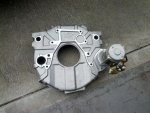Thanks for the pep talk guys. The reason I was not able to work on it this weekend is the Rim Fire, burning near Yosemite. My parent's cabin is up there (for now) just got back from what may be the last trip up there... Got a few things, took pictures for insurance.
[Update:]
I figured I should end this post on a less depressing note...
So last night at the cabin I was going through my Cummins trouble shooting guide for the grid heater. Some of you may be aware, and others not, that Cummins does not use glow plugs to preheat the cylinders like the GM engines (and Ford). Instead, they use a heater that preheats the intake plenum (air-box) and the intake air. However I have made a design choice to used 24 volts ONLY on this build, and the grid heater and its controller (required for California emissions, and thus the BAR referee sticker after the engine change), is only available in 12 volts.
This means two things:
- I need to build, or have built, a 24 volt grid heater
- I need to reverse engineer the controller, and build one that works on 24 volts.
So back to the trouble shooting guide... I extracted the following information:
- The grid heater has two equal power elements
- Each element draws 95 Amps (12 volts X 95 Amps = 1140 Watts, or about 1200 Watts)
- The controller looks at the voltage of the battery during the preheat to decide if it will even run a post-heat - this voltage threshold is 9.5 volts. This means, if the preheat cycle is running, and the voltage drops BELOW 9.5 volts (on a 12 volt system), it cancels the post-heat.
- The controller looks at the temperature sensor in the intake plenum - if it is open (failed) it also cancels the post-heat.
- The controller looks at the starter trigger to see if it has been run. this does two things:
- If the "Wait To Start" (WTS) light has been off after the preheat for more than 10-seconds before the start is triggered, it cancels the post-heat
- If the voltage during the preheat did not drop below 9.5 volts (12 volt system) AND the WTS light was not off for more than 10 seconds AND the temperature sensor is not bad, it triggers the post-heat sequence
- It should be noted that NOTHING prevents a start from being triggered BEFORE the WTS light goes out, so the post-heat sequence starts right after the starter is triggered and released - the starter trigger cancels the preheat so that the maximum power is available for the cranking
There are different sequences for different temperatures:
- Below -19C/-2F
- Preheat = 30 seconds of both elements at 100% duty cycle (just "on" for 30 seconds, no funny business - aka. full power)
- Post-heat :
- Step 1 = 15 seconds of both elements at 100% duty cycle
- Step 2 = 15 seconds of one element at 100% duty cycle
- Step 3 = 40 seconds of one element at 50% duty cycle (aka. half power)
- Step 4 = 106 seconds of one element at 25% duty cycle (aka. quarter power)
- Between -19C/-2F and -8C/+17F
- Preheat = 20 seconds of both elements at 100% duty cycle
- Post-heat:
- Step 1 = 20 seconds of both elements at 100% duty cycle
- Step 2 = 20 seconds of one element at 100% duty cycle
- Step 3 = 40 seconds of one element at 50% duty cycle
- Step 4 = 106 seconds of one element at 25% duty cycle
- Between -8C/+17F and +8C/+46F
- Preheat = 10 seconds of both elements at 100% duty cycle
- Post-heat:
- Step 1 = 10 seconds of both elements at 100% duty cycle
- Step 2 = 10 seconds of one element at 100% duty cycle
- Step 3 = 40 seconds of one element at 50% duty cycle
- Step 4 = 106 seconds of one element at 25% duty cycle
- Above +8C/+46F
- Preheat = Do nothing (no WTS light)
- Post-heat = Do nothing
Again, remembering that any start signal during the preheat cancels it - and once released the post-heat starts for the temperature at preheat start time. Also if the WTS light is off for more than 10 seconds after the preheat
OR the battery temperature drops below 9.5 volts (12 volt system)
OR the temperature sensor for the air plenum is bad, the whole post-heat is cancelled.
I now have enough info to build the control circuit and write the little software it needs - I just double the low-battery voltage to apply it to a 24 volt system (19 volts). If you read one of my earlier posts you may have also noticed that I was building a system to pick one of the two battery banks to do the start cranking, and some of its decision making was voltage and temperature based, kind of sounds like a marriage is in order...
The heaters are the next thing - to generate the same amount of heat, I just need to inject the same amount of power (1200Watts approximately, per element). Shouldn't be too hard to do. Power = Volts * Amps (25.3V * 47Amps[average] = 1200Watts). Just slice all of the duty cycle values in half

See look, it wasn't all depressing time waiting for the fire to creep up the hill to burn down the family cabin, I still had time to figure out the answer to a challenging problem on something
really important

[/Update]




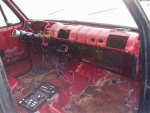
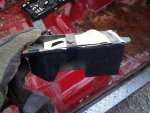

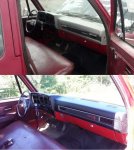
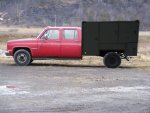

 [Edit:] And apparently how to trip your Credit Card's fraud alarms
[Edit:] And apparently how to trip your Credit Card's fraud alarms 
